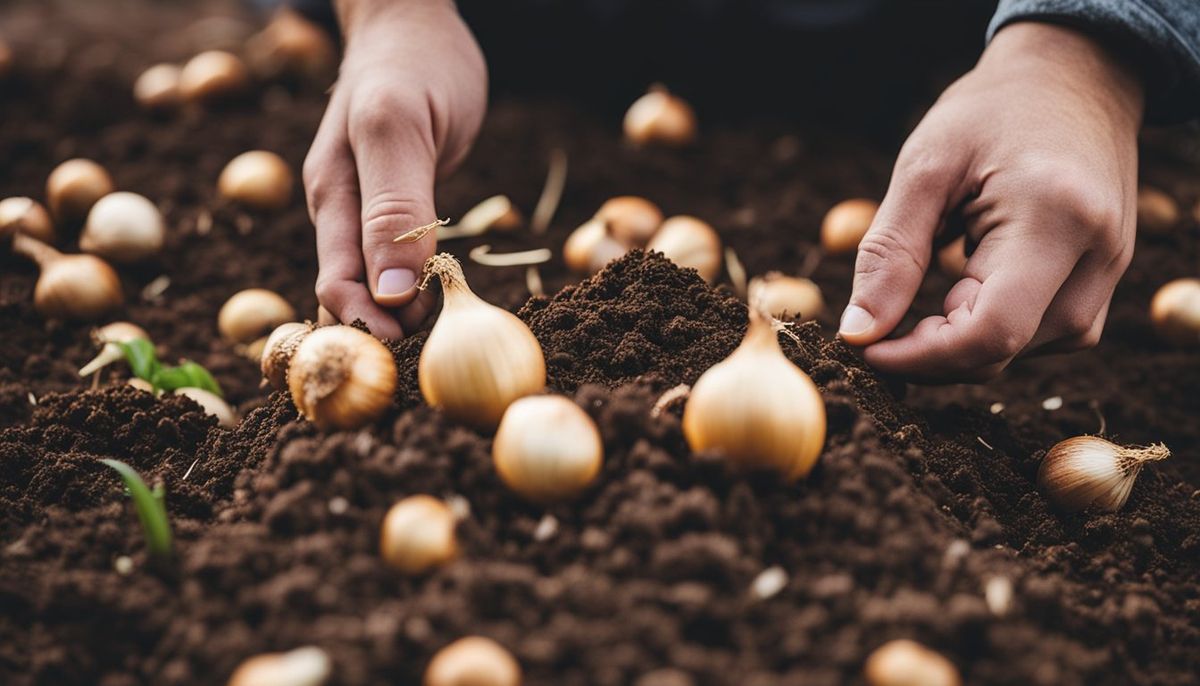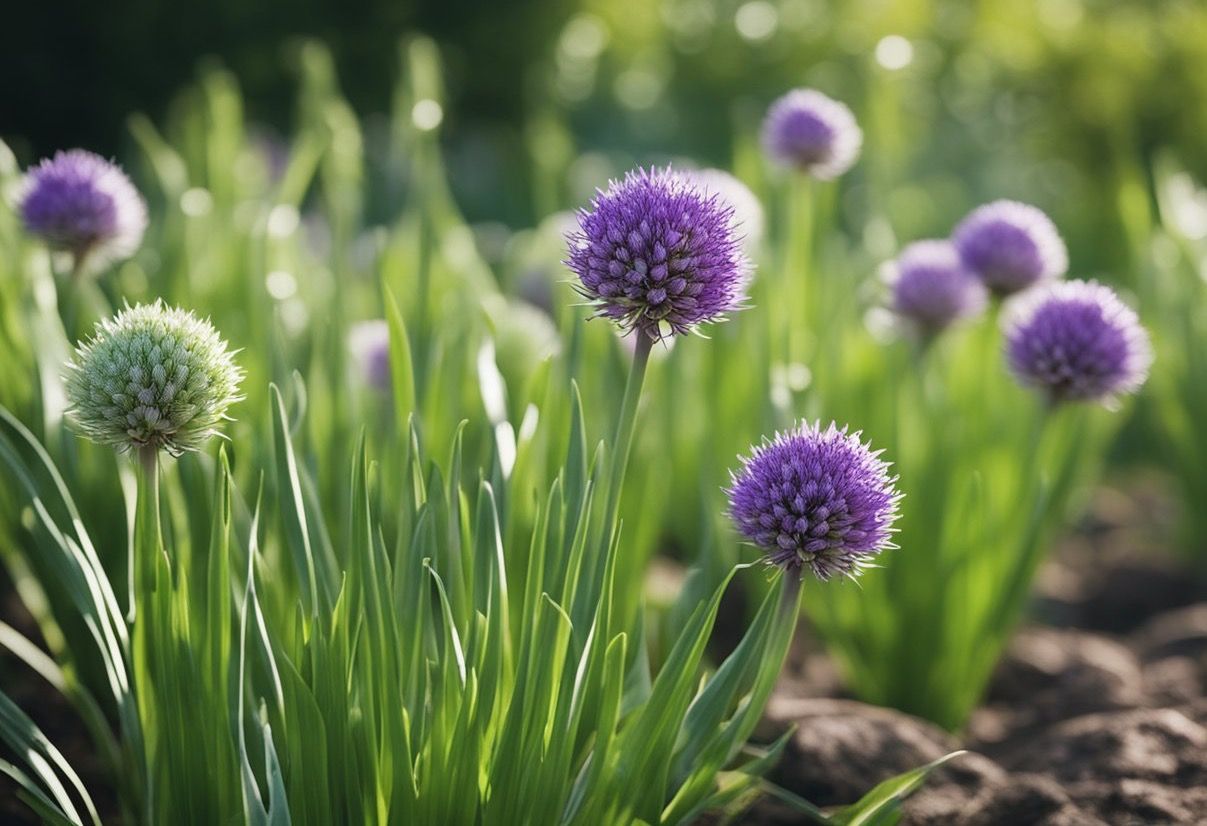How to Grow Onions
Growing onions can be a rewarding and flavorful addition to your vegetable garden, with various types available, such as red, yellow, or white, and a range of flavors from mild and sweet to pungent and tangy.

Table of Contents
To ensure a successful onion crop, you have two popular planting options: onion sets (bulbs) or onion seeds.
While onion sets are hardier and more weather-resistant, starting from seeds offers a broader variety of options.
It's essential to plan ahead, as onion seeds typically require indoor planting 6 to 12 weeks before outdoor planting time, with a consistent soil temperature above 50°F for proper germination.
About Onions
Onions (Allium cepa) are versatile vegetables in different colors, such as white, yellow, and red, as well as various flavors, ranging from sweet to mild.
Closely related to garlic, shallots, and chives, onions can be grown in cool and warm climates, making them a popular choice for many gardeners.
To grow onions successfully, you should consider the type of onion suited to your specific environment.
Short-day onions are ideal for warmer climates, while long-day onions thrive in cooler regions.
Starting your onions from seed or onion sets is essential for a healthy crop, and proper spacing between onion plants will ensure they receive adequate light and nutrients for optimal growth.
As onion leaves emerge, the bulbs will develop over time, producing delicious and nutritious onions for your kitchen.
Growing Onions
Choose between onion sets (bulbs) or onion seeds to start planting onions. It's essential to plant onions 4 to 6 weeks before your last average frost date.
Plant them 1/2 inch deep for onion sets, while seedlings should be planted 1 inch deep.
Ensure the soil pH is neutral and rich in organic matter for the best results.
The type of onion variety will affect the planting process, but generally, a well-prepared garden with adequate spacing will help your onions thrive.
Keep in mind that pencil-thin seedlings tend to form the best bulbs.

Caring for Onion Plant
Sun and Temperature
Onions thrive best in full sun and need a soil temperature of around 50 degrees Fahrenheit to grow.
Make sure to plant your onion sets or transplants in a sunny spot during early spring when soil temperature conditions are met.
Water and Humidity
Water your onion plants regularly to keep the soil moist but not soggy. Avoid over-watering, as it can lead to diseases and rotting of the bulbs.
Soil
Onions grow well in well-drained, loose soil enriched with organic matter.
Before planting, mix compost or well-rotted manure into the soil to ensure proper drainage and provide essential nutrients.
Fertilizer
Apply a nitrogen fertilizer to your onion beds to promote healthy foliage and bulb growth.
Start fertilizing when transplants or seedlings are about 6 inches tall, and reapply every 3-4 weeks throughout the growing season.
Repotting
If you're growing onions indoors, repot them as needed to accommodate their growth.
Choose containers with good drainage, and use well-draining, nutrient-rich potting mix for best results.
Pruning and Propagation
Prune onion leaves to encourage a more robust root system and stronger bulb development.
When propagating from onion sets, plant them about 1-2 inches deep, with rows at least 1-foot apart.
Space the sets around 4-6 inches apart for larger, mature onions.

Troubleshooting Plant Problems
Growing Problems
When growing onions, providing enough space for bulb development is crucial. Make sure to space onion plants 4 to 6 inches apart, allowing for sufficient room.
Additionally, avoid overwatering and underwatering to ensure healthy growth.
Maintain consistent moisture and provide proper feeding to prevent common issues such as stunted growth or poor bulb formation.
Pests and Diseases
Several pests and diseases may affect your onion plants.
Be vigilant in monitoring for pests like onion root maggots, which can cause significant damage to root systems.
To prevent the spread of diseases, practice crop rotation and remove any infected plants quickly.
Some common onion diseases include onion white rot and various fungal infections.
Companion Planting
Companion planting can improve the health and yield of your onion crop. Planting onions alongside lettuce can deter pests and improve soil fertility.
Other suitable companions for onions include carrots, beets, and strawberries.
However, avoid planting onions too close to beans or peas, as these plants may hinder each other's growth.
Conclusion
As your onion-growing journey ends, you'll need to focus on proper storage to enjoy your harvest for an extended period.
Ensure your bulbs are fully cured by drying them in a well-ventilated area until their necks are completely dry.
Store your bulbs in a cool, dark place, ideally in mesh bags, for better airflow, and avoid direct sunlight.
Both yellow globe and white Bermuda onions are popular options, known for their excellent storage capabilities, while red onions generally don't store as long.
Remember that growing onions successfully requires attention to key conditions such as planting them after the last frost, providing full sun exposure, and caring for the vegetable throughout its growth stages.
Soil with a pH of 6.0-7.0 and well-drained is ideal for onion growth.
By considering appropriate varieties like Copra and maintaining optimal growing conditions, you'll be on your way to harvesting a bountiful crop of onions.
Frequently Asked Questions
How long does it take for onions to mature?
On average, onions take around 100 to 120 days to mature fully.
Of course, the specific maturation time varies depending on the onion variety, planting method, and growing conditions.
What is the optimal method for planting onions?
Choose seeds, sets (small onion bulbs), and transplants for planting.
Each method has pros and cons, but transplants can speed up the growing process and provide stronger plants. Place transplants about 4 to 6 inches apart in your garden bed.
Are there any specific tips for growing onions in small spaces?
Yes, consider using containers or pots to grow onions in limited spaces.
Choose dwarf or bunching onion varieties, as they are better suited for confined spaces. Make sure to provide proper drainage and use high-quality potting soil.
What is the recommended depth for planting onion bulbs?
Plant onion seeds about 1 inch deep into the soil.
However, plant these bulbs only about 1/2 to 1 inch deep when using sets or transplants.
This planting depth encourages healthy root growth and helps prevent surface exposure.
Can a beginner successfully grow onions?
Absolutely! Onions are relatively easy to grow, requiring only fertile, well-draining soil, adequate sunlight, and consistent watering.
Begin by choosing a suitable onion variety for your climate and follow basic planting guidelines for best results.
Is it better to grow onions from seeds or sets?
Both methods have advantages. Seeds offer more variety and often cost less, while sets provide faster results and are easier to handle.
Transplants, a third option, tend to be the most beginner-friendly, having already established themselves as small plants.


